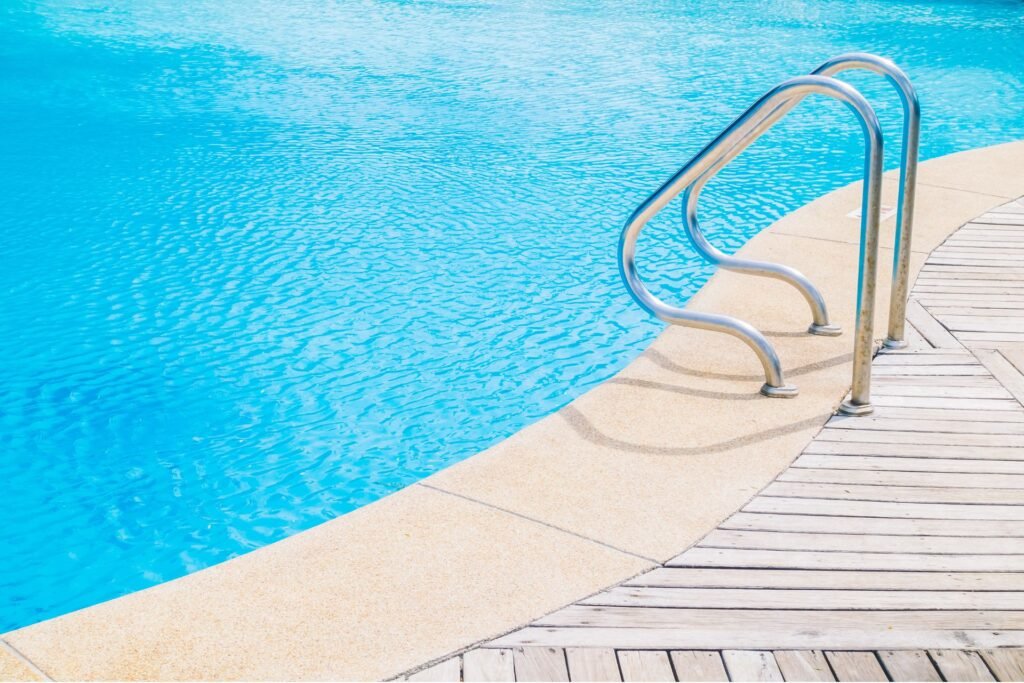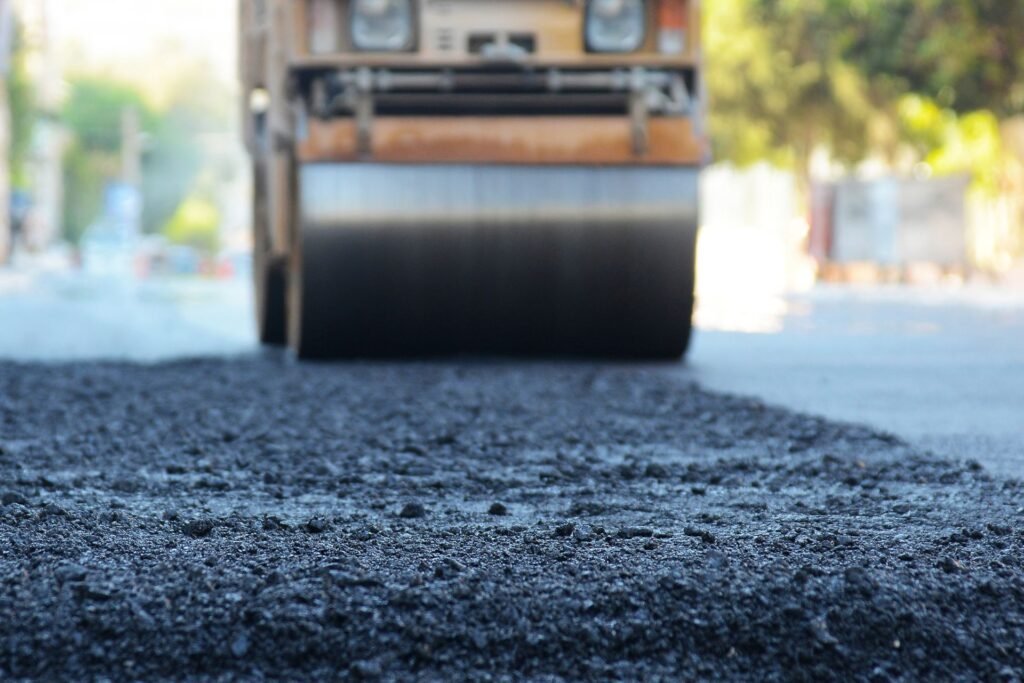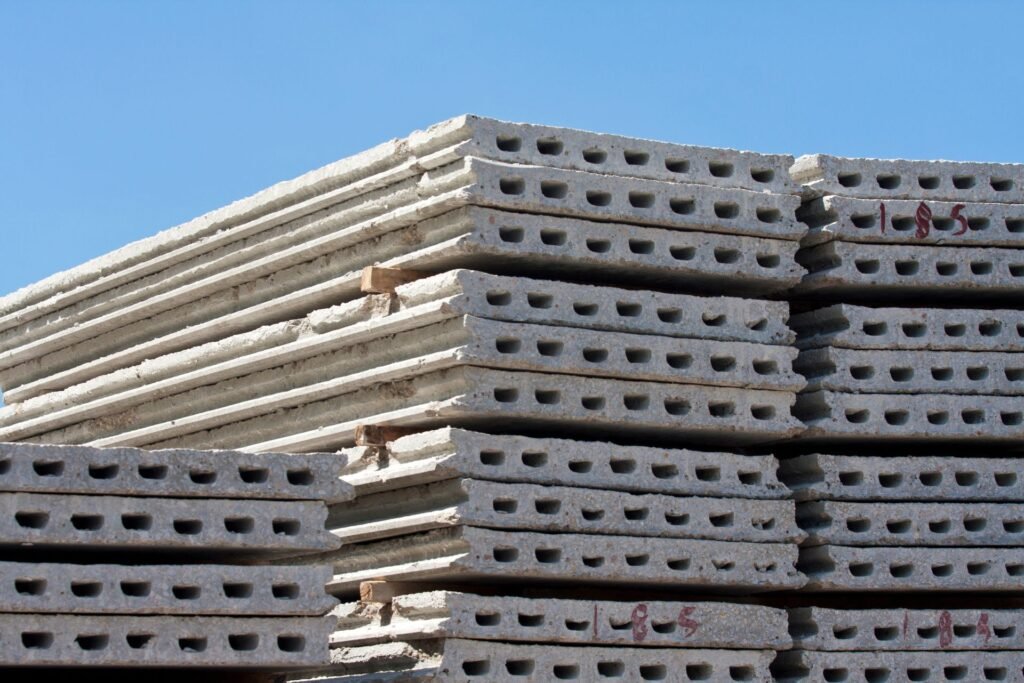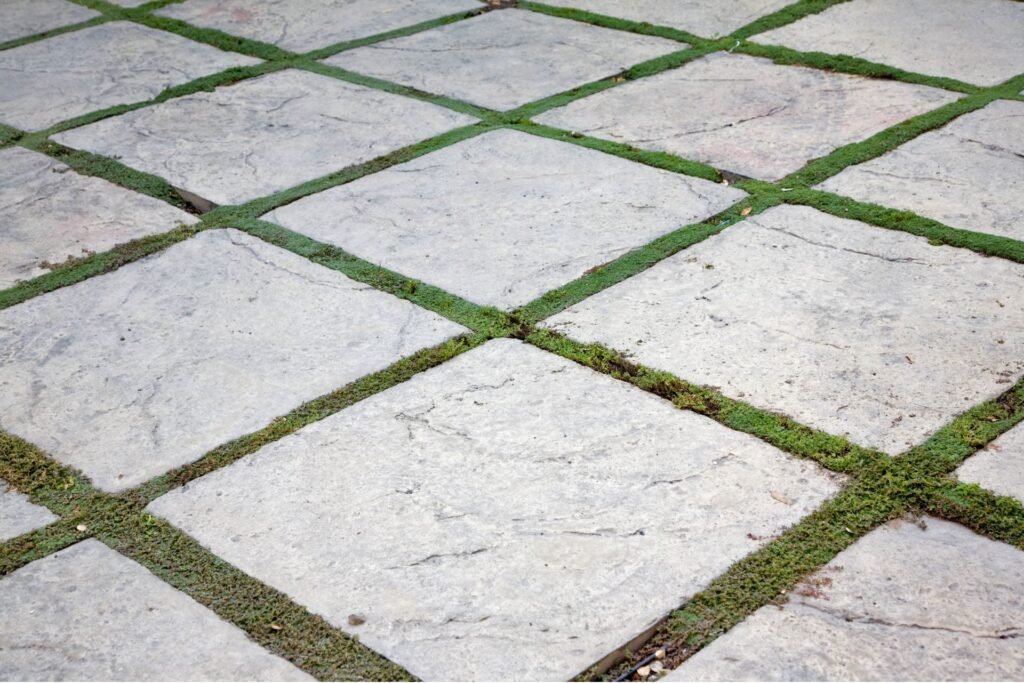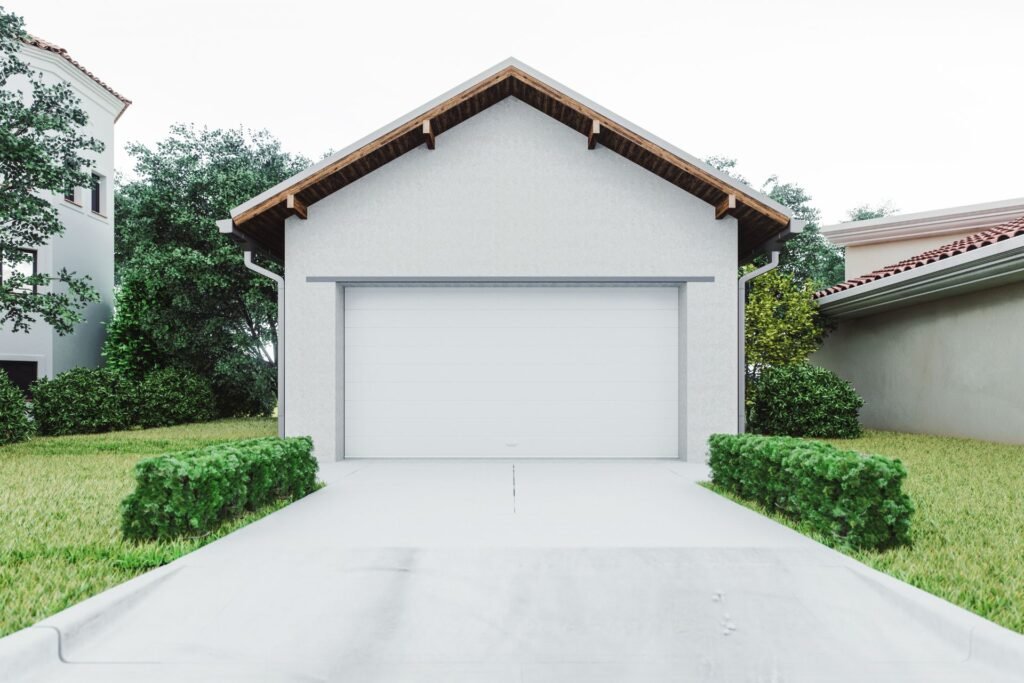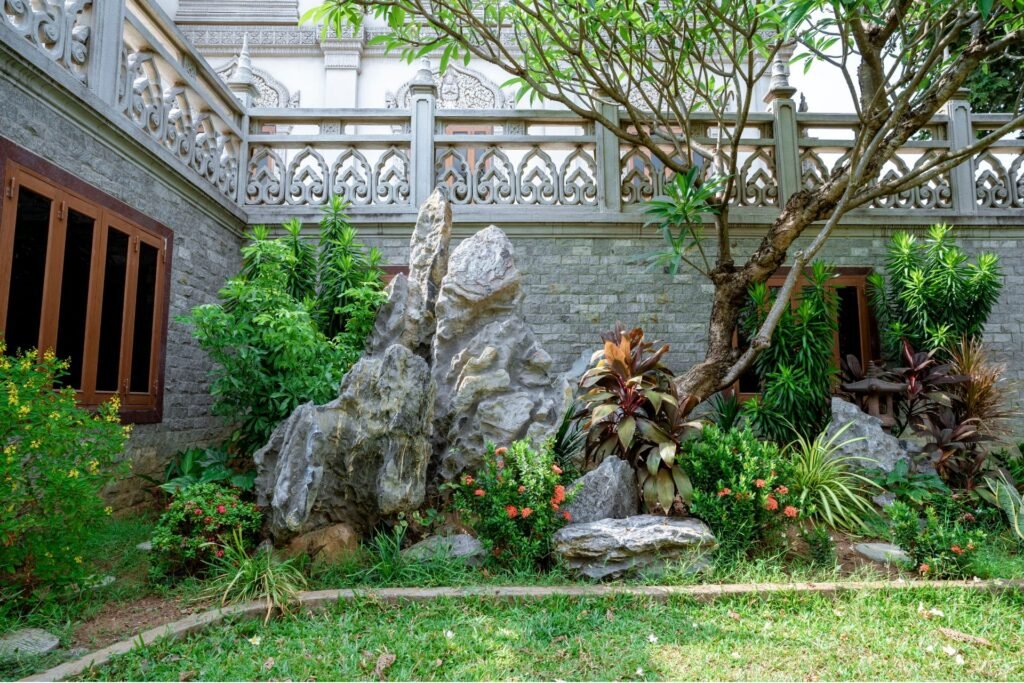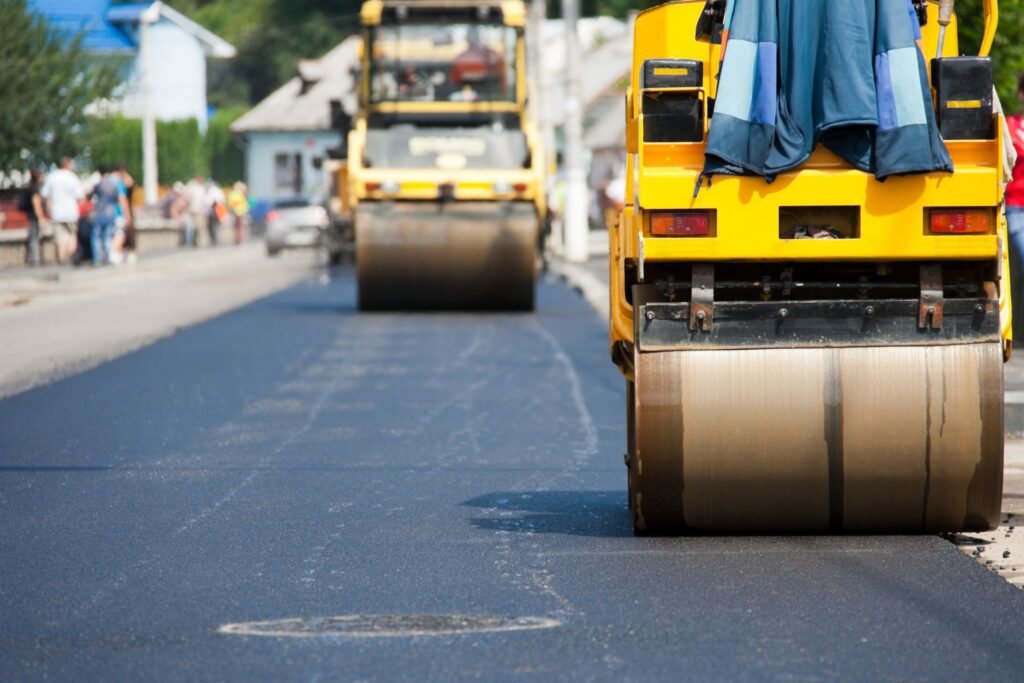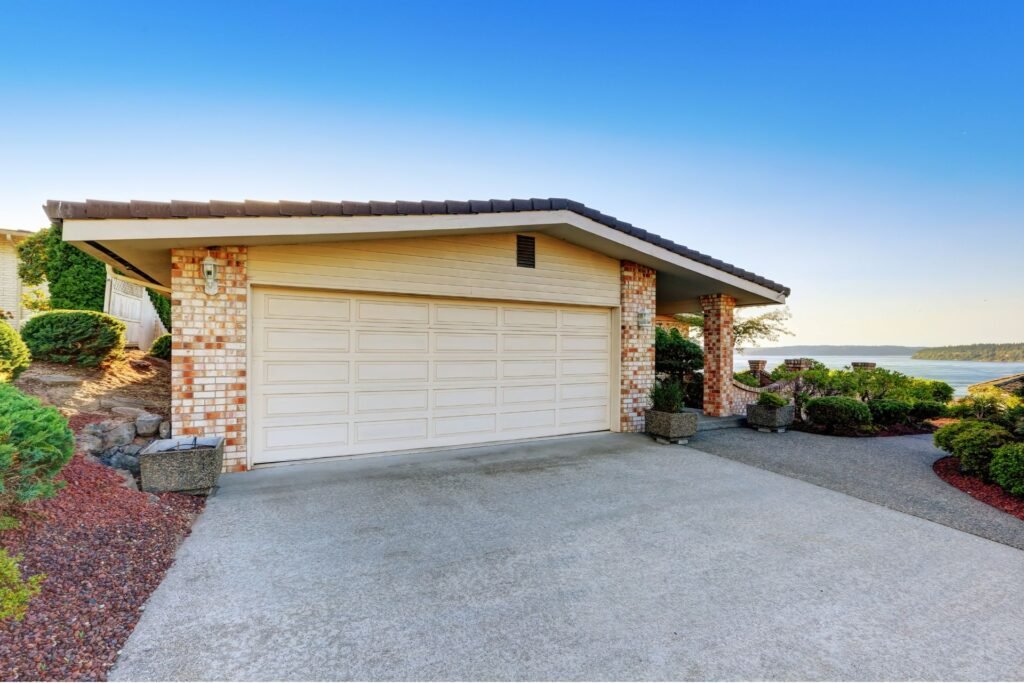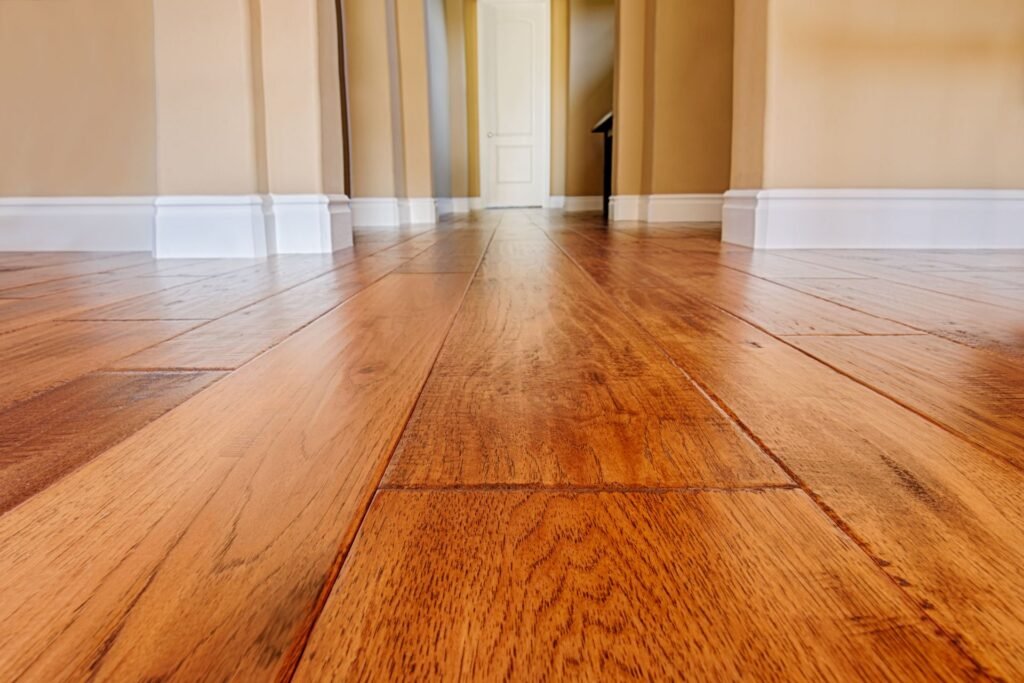Welcome to our comprehensive guide on maintaining your concrete pool surround! Whether you’re a new pool owner or a seasoned pro, understanding how often you need to reseal your pool surround is crucial for keeping it looking pristine and ensuring its longevity. In this post, we’ll delve into the factors that influence the resealing frequency, signs to watch for, and the benefits of regular maintenance. By the end, you’ll have a clear understanding of how to keep your pool area safe, beautiful, and durable for years to come.
To maintain the longevity and appearance of your concrete pool surround, it is recommended to reseal it every 2-3 years. Factors such as climate, usage, and the quality of the initial sealant can affect this timeframe. Regular resealing helps protect the surface from cracks, discoloration, and water damage, ensuring your pool area remains safe and aesthetically pleasing. For best results, consult with a professional to determine the optimal resealing schedule for your specific conditions.
Table of Contents
Understanding Concrete Pool Surrounds
Definition and Purpose
Concrete pool surrounds, also known as pool decks, are the areas around the swimming pool crafted from concrete. These surroundings serve multiple crucial purposes:
1. Safety: Concrete pool surrounds provide a non-slip surface, reducing the risk of accidents caused by wet feet around the pool area.
2. Aesthetics: They enhance the overall look of the pool area, offering a clean and modern appearance. Concrete can be customized with various finishes, colors, and patterns to complement the design of the pool and the surrounding landscape.
3. Durability: Concrete is known for its strength and longevity. It can withstand heavy foot traffic, weather conditions, and the chemicals used in pool maintenance without significant wear and tear.
4. Comfort: The surface of a concrete pool surround can be designed to be comfortable underfoot, ensuring that it doesn’t get too hot in the sun or too cold in cooler weather.
Common Issues
While concrete pool surrounds are durable, they are not immune to problems. Here are some common issues homeowners might face:
1. Cracks: One of the most common issues is cracking. Cracks can occur due to a variety of reasons, including ground movement, freeze-thaw cycles, or poor installation. These cracks can be unsightly and potentially hazardous if left unaddressed.
2. Discoloration: Over time, concrete pool surrounds can become discolored. This can be due to exposure to sunlight, pool chemicals, and regular wear and tear. Stains from leaves, dirt, and algae can also contribute to discoloration.
3. Surface Erosion: The surface of the concrete can erode due to weather conditions and constant water exposure. This erosion can lead to a rough and uneven surface, which can be uncomfortable to walk on and detract from the pool area’s aesthetic appeal.
Preventive Measures and Maintenance
Regular maintenance and preventive measures can mitigate these common issues:
1. Sealing: Applying a high-quality sealant can protect the concrete from moisture penetration, chemicals, and stains. Regular re-sealing can help maintain the appearance and longevity of the pool surround.
2. Proper Installation: Ensuring that the concrete is properly mixed, poured, and cured can prevent many issues related to cracks and erosion. It’s essential to hire experienced professionals for the installation process.
3. Cleaning: Regular cleaning with appropriate cleaning agents can prevent discoloration and the buildup of stains. Power washing can be effective in removing stubborn dirt and algae.
4. Repairing Cracks: Small cracks should be repaired as soon as they appear to prevent them from growing larger. Using concrete patching compounds can effectively seal cracks and restore surface integrity.
By understanding what a concrete pool surround is, its purpose, and the common issues it faces, homeowners can take proactive steps to ensure their pool area remains safe, attractive, and durable for years to come. Regular maintenance and timely repairs are key to preserving the beauty and functionality of concrete pool surrounds.

Factors Affecting The Frequency Of Resealing
Understanding the factors that affect the frequency of resealing your concrete surfaces is crucial for maintaining their longevity and appearance. Here’s a detailed explanation of the primary elements that influence how often you need to reseal.
Climate and Weather Conditions
Sun Exposure
One of the most significant factors is the amount of sun exposure your concrete surface receives. UV rays from the sun can cause the sealant to break down over time. Prolonged exposure to direct sunlight accelerates the degradation process, leading to a need for more frequent resealing. UV rays can cause the surface to fade and lose its luster, making regular resealing essential to maintain its aesthetic appeal and protective qualities.
Rain and Moisture
Water is another critical element that impacts the durability of your sealant. Frequent rain or high humidity levels can weaken the sealant, allowing moisture to penetrate the concrete. This can lead to various issues, including cracking and spalling. Moisture infiltration is especially problematic in areas where the sealant has worn thin, emphasizing the importance of regular maintenance and resealing to keep water at bay.
Temperature Fluctuations
Regions that experience significant temperature changes, particularly freeze-thaw cycles, can see their concrete surfaces suffer. Water that seeps into the concrete can freeze and expand, causing cracks and other damage. This cycle of freezing and thawing can significantly compromise the integrity of both the concrete and the sealant, necessitating more frequent resealing to protect the surface.
Usage and Foot Traffic
Frequency of Use
The amount of use your concrete surface sees plays a direct role in how often it needs resealing. High-traffic areas, such as walkways and patios, will wear down more quickly than surfaces that see less use. Regular foot traffic can abrade the sealant, reducing its effectiveness over time. Therefore, heavily used areas will require more frequent resealing to maintain their protective layer.
Type of Footwear
The type of footwear that regularly contacts the concrete can also impact the sealant’s durability. Hard-soled shoes can cause more wear and tear compared to barefoot traffic or softer-soled shoes. In commercial settings or areas where hard-soled shoes are common, the sealant can degrade faster, leading to a need for more frequent resealing.
Quality of Initial Installation and Sealant Used
Professional Installation
The quality of the initial sealant application significantly affects how long it lasts. Professional installation ensures that the sealant is applied evenly and thoroughly, covering all areas properly. Proper installation techniques help in achieving a uniform protective layer, which can withstand various environmental and usage-related stresses better than a poorly applied sealant.
Types of Sealants
Not all sealants are created equal. The type of sealant used can determine its durability and how often resealing is necessary. Some sealants are designed to be more durable and resistant to UV rays, moisture, and wear. Investing in a high-quality sealant can extend the time between resealing, offering better protection for your concrete surfaces over a longer period.
By understanding these factors, you can better plan and schedule your resealing maintenance to ensure your concrete surfaces remain in optimal condition. Regularly assessing the impact of climate, usage, and the quality of the initial installation can help you determine the best resealing schedule for your needs. Investing in high-quality sealants and professional installation can also significantly reduce the frequency of resealing, saving you time and money in the long run.

Signs Your Concrete Pool Surround Needs Resealing
Maintaining your concrete pool surround is essential for both aesthetic appeal and safety. Over time, the concrete around your pool may show signs that it needs resealing. Identifying these signs early can prevent further damage and costly repairs. Here are the key indicators that your concrete pool surround might need some attention:
Visual Cues
Fading Color
One of the most noticeable signs that your concrete pool surround needs resealing is a loss of color vibrancy. When first installed, the concrete will have a rich, vibrant hue. However, exposure to sunlight, chlorine, and general wear and tear can cause the color to fade. If you observe that your pool surround looks dull and lacks its original brightness, it’s a clear sign that resealing is necessary. A fresh sealant can restore the color and protect the concrete from further UV damage.
Visible Cracks
Another visual cue is the appearance of cracks. Cracks can range from small hairline fractures to larger, more significant breaks. These can be caused by various factors, including temperature fluctuations, ground movement, and heavy foot traffic. Small cracks may not seem like a big issue at first, but they can quickly grow and lead to more severe problems. If you notice any cracks forming on your concrete pool surround, it’s time to consider resealing to prevent water from seeping in and causing further damage.
Physical Changes
Surface Roughness
The texture of your concrete pool surround is another critical factor to monitor. Over time, the surface can become rougher due to the sealant wearing off. This change in texture not only affects the look and feel of the pool area but can also be uncomfortable and potentially hazardous to walk barefoot. If your pool surround feels significantly rougher than when it was new, it’s a sign that the protective sealant has worn down, and resealing is required to smooth out the surface.
Water Absorption
One of the key functions of a sealant is to make the concrete surface water-resistant. When the sealant wears off, the concrete will start to absorb water instead of repelling it. You may notice puddles of water that take longer to evaporate or areas where the water seems to soak in quickly. This increased water absorption can lead to more severe issues, such as freeze-thaw damage in colder climates. Resealing the concrete will restore its water-resistant properties and help maintain its integrity.
Other Indicators
Weed Growth
Weeds growing through the cracks in your concrete pool surround are more than just an eyesore. They indicate that the concrete is deteriorating and that there are gaps for plants to take root. This can further weaken the concrete structure and lead to more extensive cracking. Regular maintenance and resealing can help keep these pesky plants at bay and preserve the smooth, clean look of your pool area.
Stains and Mold
Persistent stains and mold spots are other signs that your concrete pool surround needs resealing. Over time, exposure to water, chemicals, and organic matter can lead to staining and mold growth. These not only detract from the appearance of your pool area but can also create a slippery and unsafe surface. If you notice stains and mold that are difficult to clean, it’s a clear indication that the sealant has worn off, and resealing is necessary to protect the concrete and keep it looking fresh and clean.
In conclusion, keeping an eye out for these signs can help you maintain the beauty and safety of your concrete pool surround. Regular resealing not only enhances the appearance of your pool area but also extends the life of the concrete, ensuring it remains a welcoming and enjoyable space for years to come. If you notice any of these indicators, consider contacting a professional to assess and reseal your concrete pool surround.

The Resealing Process
Resealing a concrete pool surround is essential for maintaining its appearance and durability. Here’s a detailed guide to ensure a professional and long-lasting reseal.
Preparation
Cleaning the Surface
Start by thoroughly cleaning the surface to remove dirt, debris, and any remnants of old sealant. Use a high-pressure washer or a scrub brush with a suitable cleaning solution to ensure the surface is spotless. This step is crucial as any contaminants left behind can prevent the new sealant from adhering properly.
Repairing Cracks
Inspect the concrete for any cracks or imperfections. Use a concrete repair compound to fill in these cracks, ensuring the surface is even and smooth. Allow the repair compound to dry completely before proceeding with the resealing process. This step helps in preventing water infiltration and further damage to the concrete.
Choosing the Right Sealant
Types of Sealants
There are two main types of sealants to consider: penetrating sealants and topical sealants. Penetrating sealants soak into the concrete and protect it from within, making them ideal for areas exposed to moisture. Topical sealants form a protective layer on the surface of the concrete, providing a glossy finish and enhancing the appearance.
Selecting a Quality Product
When choosing a sealant, consider factors such as durability, ease of application, and the level of protection required. Look for products that offer UV resistance, are water-repellent, and are suitable for the type of concrete you have. Reading reviews and seeking recommendations from professionals can also help in selecting a high-quality sealant.
Application
Tools and Materials Needed
Gather all necessary tools and materials before starting the application. You’ll need a paint roller or sprayer, a brush for edges and corners, a bucket, protective gloves, and safety glasses. Having everything on hand will make the process smoother and more efficient.
Step-by-Step Guide
1. Mix the Sealant: Follow the manufacturer’s instructions to mix the sealant thoroughly.
2. Apply the First Coat: Use the paint roller or sprayer to apply an even coat of sealant over the entire surface. Be sure to cover all areas, including corners and edges, using a brush.
3. Allow to Dry: Let the first coat dry as per the manufacturer’s recommended drying time.
4. Apply the Second Coat: For added protection, apply a second coat of sealant. This layer ensures a more durable and long-lasting finish.
5. Final Touches: Inspect the surface for any missed spots and apply additional sealant if necessary.
Drying and Curing
Timeframes
The drying time can vary depending on the type of sealant used and weather conditions. Typically, it takes about 24 to 48 hours for the sealant to dry completely. It’s important to avoid using the pool area during this time to allow the sealant to cure properly.
Maintenance Tips
To maintain the newly sealed surface, regularly clean the area to prevent dirt buildup. Avoid using harsh chemicals that can damage the sealant. Depending on the type of sealant, you might need to reapply it every few years to keep the concrete in optimal condition.
Resealing your concrete pool surround not only enhances its appearance but also extends its lifespan. By following these steps, you can achieve a professional and durable finish that will protect your pool area for years to come.
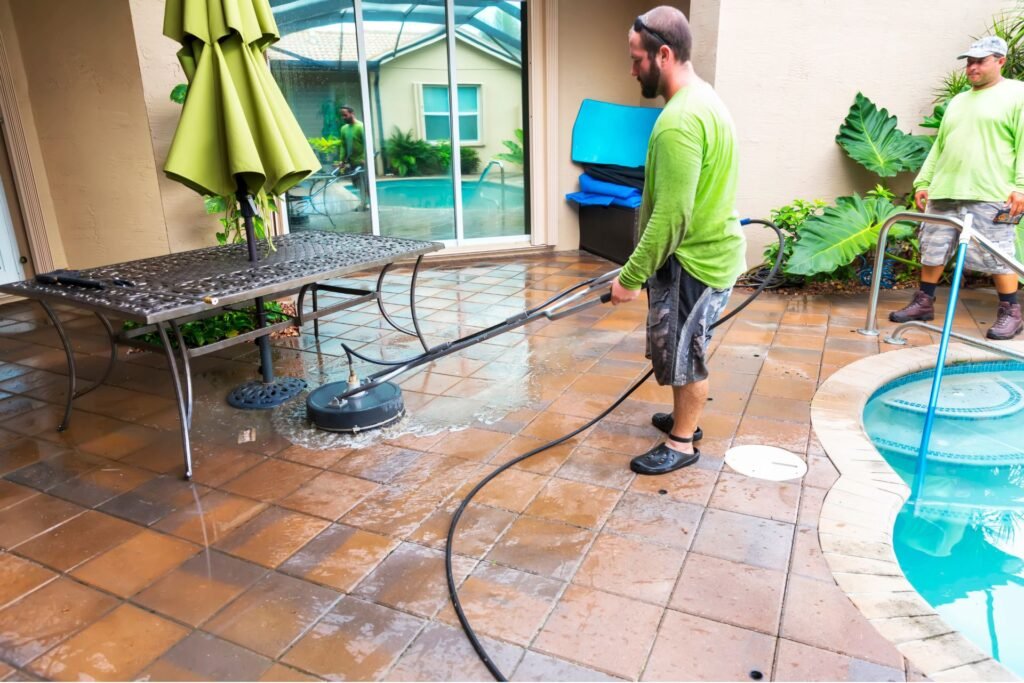
How Often Should You Reseal?
Maintaining your concrete pool surround by resealing it at appropriate intervals is crucial to prolong its life and maintain its appearance. Here’s a detailed look at the factors influencing resealing frequency and tips for ensuring your pool area stays in top shape.
General Guidelines
Typical Timeframes
For most concrete pool surrounds, it’s generally recommended to reseal every 2-3 years. This timeframe helps protect the surface from wear and tear, as well as the elements. The sealer acts as a barrier against water, chemicals, and UV rays, preventing damage and preserving the concrete’s appearance and integrity.
Adjusting Based on Specific Conditions
High-Traffic Areas
If your pool area is a hub of activity, you may need to reseal more often. High foot traffic can wear down the sealer more quickly, leading to potential damage to the concrete surface beneath. In such cases, resealing every 1-2 years might be more appropriate to ensure continuous protection.
Extreme Weather
Regions with harsh climates, whether it be intense sun, heavy rain, or freezing temperatures, can also affect the frequency of resealing. For instance, UV rays can degrade the sealer, while freeze-thaw cycles can cause it to crack and peel. In these environments, a more frequent resealing schedule of every 1-2 years can help mitigate the effects of extreme weather and prolong the life of your pool surround.
Professional Advice
Consulting with Experts
While general guidelines provide a good starting point, consulting with a professional can offer tailored advice based on the specific conditions of your pool area. Experts can assess factors like the type of sealer used, the local climate, and the amount of use your pool surround gets. They can also recommend the best products and application techniques to ensure optimal protection.
Regular consultations with professionals can also help you spot potential issues early and address them before they become major problems. This proactive approach can save you time and money in the long run, ensuring your pool surround remains safe and aesthetically pleasing.
Resealing your concrete pool surround is an essential part of its maintenance. By following the general guideline of resealing every 2-3 years and adjusting based on specific conditions like traffic and weather, you can keep your pool area in excellent condition. Consulting with experts ensures you receive personalized advice and optimal care for your unique situation. Regular resealing not only protects your investment but also enhances the enjoyment and safety of your pool area for years to come.

Benefits Of Regular Resealing
Aesthetic Appeal
Maintaining Appearance
One of the foremost benefits of regular resealing is the aesthetic appeal it provides. Over time, exposure to the elements can cause your pool area to look worn and tired. Regular resealing helps maintain a fresh and clean appearance, enhancing the overall look of your outdoor space. It ensures that your pool area continues to look inviting and well-maintained, adding to the enjoyment of your swimming pool.
Durability and Longevity
Preventing Damage
Regular resealing plays a crucial role in enhancing the durability and longevity of your pool area. Without proper maintenance, pool surfaces can become susceptible to cracks, erosion, and other forms of damage due to water and chemical exposure. Resealing forms a protective barrier that helps prevent these issues, ensuring your pool area remains in good condition for many years. This proactive approach can save you from significant structural problems down the line.
Safety
Non-Slip Surface
Safety is a paramount concern around pool areas, and regular resealing can significantly contribute to this. Over time, the surface of your pool area can become slippery due to wear and tear. By resealing the surface, you can maintain a non-slip environment, reducing the risk of accidents and injuries. This is especially important for families with children and elderly members who may be more prone to slips and falls.
Cost Savings
Avoiding Major Repairs
Investing in regular resealing is a cost-effective strategy that can save you money in the long run. Neglecting this essential maintenance can lead to extensive damage, necessitating major repairs that can be quite expensive. By keeping up with regular resealing, you address minor issues before they escalate into significant problems. This not only preserves the integrity of your pool area but also ensures that you avoid the high costs associated with major repair work.
In summary, regular resealing of your pool area offers multiple benefits, including enhancing its aesthetic appeal, improving durability and longevity, ensuring safety, and saving costs by preventing major repairs. This routine maintenance task is a wise investment that keeps your pool area looking great, functioning well, and safe for all users.

DIY Vs. Professional Resealing
When it comes to resealing surfaces like concrete driveways, pool surrounds, or patios, you have two main options: doing it yourself (DIY) or hiring a professional. Each approach has its own set of advantages and disadvantages, as well as different cost implications. Here, we’ll explore both options in detail to help you make an informed decision.
DIY Resealing
Pros and Cons: Benefits and Drawbacks of Doing It Yourself
DIY resealing can be an attractive option for many homeowners. One of the primary benefits is the sense of accomplishment and pride that comes from completing a project on your own. Additionally, it can be a cost-effective solution if you have the necessary skills and tools. You also have the flexibility to work at your own pace and on your own schedule.
However, DIY resealing also comes with its challenges. The process requires a good understanding of the materials and techniques involved to ensure a quality finish. Mistakes can lead to uneven application, poor adhesion, or even damage to the surface. Furthermore, it can be time-consuming and physically demanding, particularly for larger areas.
Cost Considerations: Potential Savings and Risks
From a cost perspective, DIY resealing can save you money on labor costs. You will mainly need to budget for the cost of materials, such as sealant, brushes, rollers, and protective gear. However, the savings might not be as significant if you need to purchase or rent specialized equipment. Additionally, if the job is not done correctly, you may end up spending more on repairs or hiring a professional to fix the mistakes.
Hiring a Professional
Pros and Cons: Advantages and Potential Downsides
Hiring a professional for resealing projects offers several advantages. Professionals bring expertise and experience, ensuring that the job is done right the first time. They have access to high-quality materials and equipment, which can result in a more durable and aesthetically pleasing finish. Moreover, it saves you time and effort, allowing you to focus on other tasks or simply enjoy your leisure time.
On the downside, hiring a professional can be more expensive due to labor costs. There is also the potential risk of choosing an unreliable contractor, which can lead to subpar work and additional expenses.
Finding a Reliable Service: Tips for Choosing a Reputable Contractor
To ensure you hire a reputable contractor, start by doing thorough research. Look for contractors with positive reviews and testimonials from previous clients. Check their credentials, including licenses and insurance, to confirm their legitimacy. It’s also a good idea to ask for references and view examples of their past work.
When you contact potential contractors, ask detailed questions about their experience, the materials they use, and their process for resealing. Obtain multiple quotes to compare prices and services, but be wary of offers that seem too good to be true. Finally, ensure that the contractor provides a written contract outlining the scope of work, timeline, and costs to avoid any misunderstandings.
Deciding between DIY resealing and hiring a professional depends on your skills, budget, and the complexity of the project. While DIY can save money and provide a sense of achievement, it also carries risks if not done correctly. Hiring a professional ensures a high-quality finish and saves time, though it comes at a higher cost. By weighing the pros and cons and doing your due diligence, you can make the best choice for your resealing project.

FAQs: About How Often Will I Need to Reseal My Concrete Pool Surround
How often should I reseal my concrete pool surround?
It is generally recommended to reseal your concrete pool surround every 2-3 years. However, this can vary based on factors such as climate, usage, and the quality of the initial sealant.
What are the signs that my concrete pool surround needs resealing?
Common signs include fading color, visible cracks, surface roughness, water not evaporating quickly, weed growth through cracks, and persistent stains or mold spots.
Can I reseal the concrete pool surrounding myself?
Yes, you can reseal your concrete pool and surround yourself if you follow the proper preparation and application steps. However, hiring a professional may ensure a more durable and high-quality finish.
What types of sealants are available for concrete pool surrounds?
There are two main types of sealants: penetrating sealants, which absorb into the concrete, and topical sealants, which form a protective layer on the surface. Each type has its benefits depending on your specific needs.
How do I prepare my concrete pool surround for resealing?
Preparation involves cleaning the surface thoroughly to remove dirt, debris, and old sealant, and repairing any cracks. This ensures the new sealant adheres properly and provides effective protection.
How long does it take for the sealant to dry and cure?
The drying time for sealant can vary, but it typically takes 24-48 hours to dry. Full curing may take up to a week, during which time the surface should be protected from heavy use and water exposure.
What are the benefits of regularly resealing my concrete pool surround?
Regular resealing maintains the aesthetic appeal, enhances durability, prevents cracks and erosion, ensures a non-slip surface, and can save on costly repairs by preventing major damage.
Can weather conditions affect the resealing process?
Yes, weather conditions such as extreme heat, cold, or rain can affect the resealing process. It is best to reseal during moderate temperatures and dry conditions to ensure optimal results.
Is there a difference in resealing frequency for high-traffic areas?
High-traffic areas may require more frequent resealing due to increased wear and tear. Monitoring these areas and resealing them as needed can help maintain their appearance and functionality.
Should I consult a professional for resealing my concrete pool surround?
Consulting a professional can be beneficial, especially if you’re unsure about the process or dealing with extensive damage. Professionals can provide expert advice and ensure the resealing is done correctly for maximum longevity.
Conclusion
Regular resealing of your concrete pool surround is essential to maintain its durability and aesthetic appeal. As highlighted, resealing should be done every 2-3 years to protect the surface from harsh weather conditions and chemical exposure, ultimately prolonging its lifespan. The benefits of consistent resealing include preventing cracks, reducing wear and tear, and enhancing the overall appearance of your pool area. To ensure your concrete pool surround remains in optimal condition, regular inspections and timely maintenance are crucial. We recommend scheduling a professional inspection or consultation to address any potential issues and keep your pool surround looking its best.
About the Author:
Mike Veail is a recognized digital marketing expert with over 6 years of experience in helping tradespeople and small businesses thrive online. A former quantity surveyor, Mike combines deep industry knowledge with hands-on expertise in SEO and Google Ads. His marketing strategies are tailored to the specific needs of the trades sector, helping businesses increase visibility and generate more leads through proven, ethical methods.
Mike has successfully partnered with numerous companies, establishing a track record of delivering measurable results. His work has been featured across various platforms that showcase his expertise in lead generation and online marketing for the trades sector.
Learn more about Mike's experience and services at https://theleadguy.online or follow him on social media:

